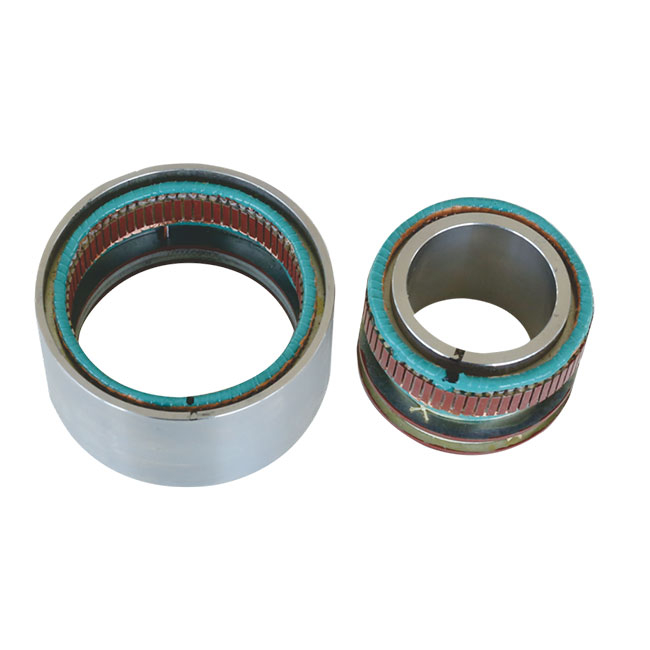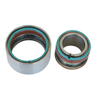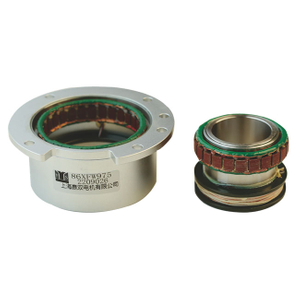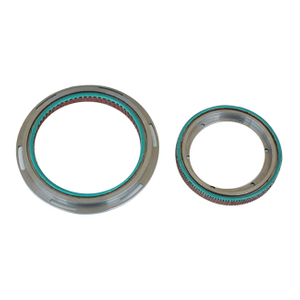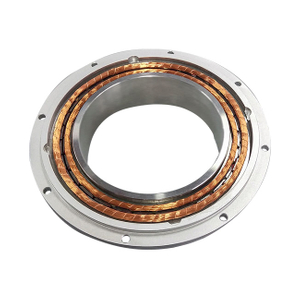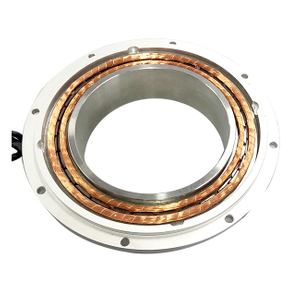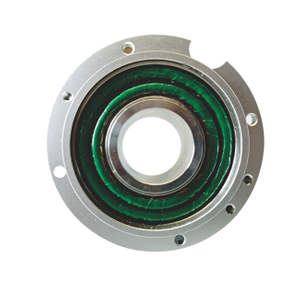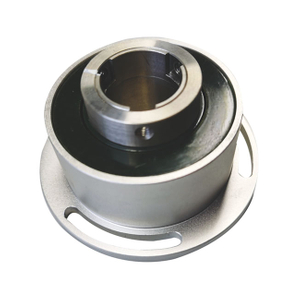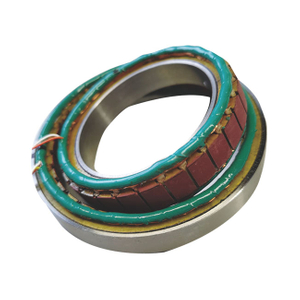Main Parameters
| Model | J80XFSW54532A |
| Pole Pairs | 1:32 |
| Input Voltage | AC 4 Vrms |
| Input Frequency | 5000 Hz |
| Transformation Ratio | 0.5 ±10% |
| Accuracy (of coarse resolver) | ±30' max |
| Accuracy (of fine resolver) | ±30" max |
| Phase Shift (of coarse resolver) | 7° ±3° |
| Phase Shift (of fine resolver) | 24° ±3° |
| Input Impedance (of coarse resolver) | (63 ±9) Ω |
| Input Impedance (of fine resolver) | (63 ±9) Ω |
| Output Impedance (of coarse resolver) | (510 ±77) Ω |
| Output Impedance (of fine resolver) | (730 ±110) Ω |
| Dielectric Strength | AC 500 Vrms 1min |
| Insulation Resistance | 250 MΩ min |
| Maximum Rotational Speed | 2250 rpm |
| Operating Temperature Range | -55℃ to +155℃ |
Basic Structure
Components: A dual speed resolver is composed of a rotating core and two stationary coils, with one coil linked to the input power supply and the other to the output load.
Magnetic Coupling: The rotation of the core creates a magnetic coupling between the coils, facilitating the transfer of electrical energy.
Working Principle
Automatic Load Adjustment: The resolver automatically maintains output voltage stability. An increase in load demand triggers an increase in input coil current, adjusting the output voltage accordingly. Conversely, a decrease in load results in a rise in output voltage.
Power Transfer Mechanism: Electrical energy is transferred from the input coil to the output coil via magnetic coupling, not directly to the load. This process involves a transformation of electrical energy within the coils before it is delivered to the load.
Unique Circuit Configuration: The resolver's circuit differs from traditional transformers, enabling rapid power transfer even under symmetrical load conditions.
Advantages
Fast Response: The resolver's design ensures swift reaction to changes in load, optimizing power delivery.
High Efficiency and Low Loss: The innovative structure minimizes energy loss during transmission, enhancing overall system performance.
Applications
Power Transmission and Conversion: Dual speed resolvers are extensively utilized in applications requiring efficient power management, such as in industrial automation and advanced machinery.
Automated Equipment: They are particularly valuable in highly automated systems like industrial robots and CNC machines, where quick response and high efficiency are critical.

